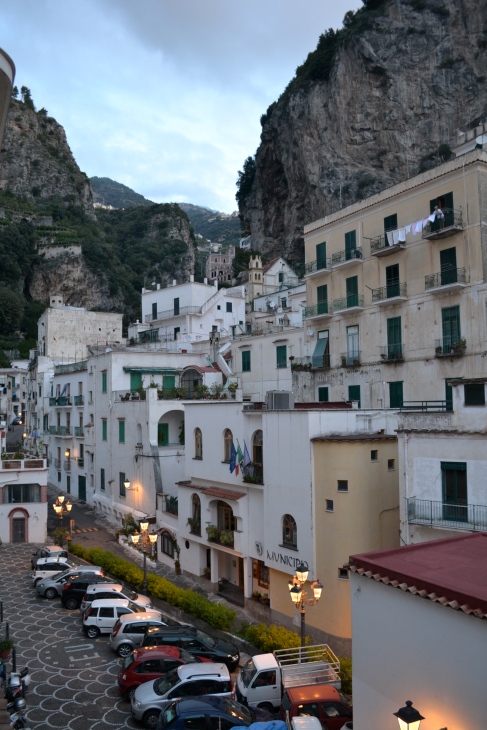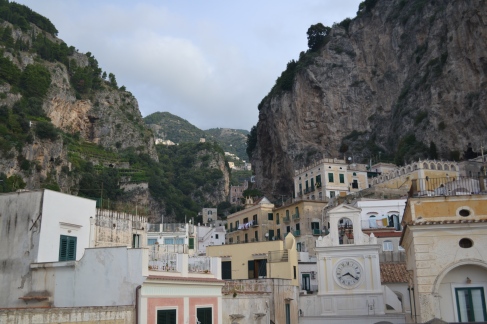After the success of going to Croatia without anyone I knew, it was time I dealt with disaster.
Erica and I had gone on a planning spree a couple weeks ago and decided we wanted to go to the Amalfi Coast together. Which sounds great, right? Yeah, duh. But we had never travelled together, and maybe I should have been clued in to how bad an idea this was when I noticed she never explored the city we were living in. She was always, always always always on her computer, messaging friends back home. Which I can understand to an extent. But still, how often do you, as a college student, get to live in Firenze, Italia for four months?
So anyways, during our planning spree, we decided we were going to take a night train down to Naples and go to Pompei and the Amalfi Coast from there. Mistake numero uno: I didn’t check the tickets. The first ticket was for the fast train to Rome. Numero due: The connecting train to Naples didn’t leave until the next morning, when the train station opened back up. There was a gap we didn’t know was there until we arrived at Stazione Termini in Rome, and were getting ready to camp out on some benches and eat McDonalds. But the station closes down completely for about five hours at night. We were standing out in the front of the now locked doors, wondering if we should find a spare piece of concrete amidst the other vagrants, or…I don’t know what our other plan would have been. Wandering Rome at night without a map? In any case, a man named Mario decided to walk with us to find a hostel. He wasn’t an old creeper, maybe 25, and he was pretty nice. To avoid having to actually share a room with him, we set our room limit at €15. We got laughed out of several places. We walked around for maybe two hours, when he actually found a place that would accept our price. Okay, parents, I never told you about this, but as you can see, Mario was not an ax-murderer or a crazy rapist. Erica stayed awake playing games on her iPad and let me sleep. I slept with my feet up by Mario’s head. I hope they smelled.
At about 6.30, we left him still sleeping at walked back to Termini, which was open again. We took the first train to Naples and were roundly harassed by a group of teenage boys until the train car filled up enough that they had to stay in their seats. They asked us to go out with them about forty times.
It was pouring in Naples, and we couldn’t find the Circumvesuviana line (hint: it’s downstairs). This was the train that was going to take us to Pompei, and then to Salerno, where we would catch a bus to Amalfi. Our train broke down five times and had water pouring in from where the cars connected. I think Erica wanted to kill me.
We decided to forego Pompei until the trip back due to the rain, but Erica also decided she only wanted to stay in Amalfi one night and then come home first thing the next day. This was the first trip I had taken without a guide of any kind. If I had been braver, I would have told her she could do what she wanted, but I was going to stay. But, spoiler alert, I went back with her. That was kind of the beginning of the end between us.
The Amalfi Coast was beautiful, even in less-than-ideal weather. There was a fairly terrifying bus ride from the train station in Salerno to the town of Amalfi. We had to backtrack a little to get to Atrani, where our hostel was. After a nap in one of the rooms of A’Scalinatella, the hostel in Atrani that I had found, I watched the sun set on this beautiful church high up on a cliff.


The church is Santa Maria del Bando, and is home to a painting of Mary and Jesus by an unknown 3rd-century artist.
The fact that we didn’t explore a bunch, or stay very long just gives me a good reason to go back. At the time, I was mostly just happy to get a warm shower.
The next morning Erica and I had a really nice breakfast in the dining room. We had tea, orange juice, croissants filled with peach jam, biscuits with Nutella, toast and eggs. While we were waiting for the bus to come back through town, we walked down the the beach, where boats were waiting to be sent out for the day.



Since I didn’t get to spend really any time on the Amalfi Coast, here’s some history.
Amalfi was a major maritime trading hub in Byzantine times (c. 330-1453). In the 19th century the coast was extremely isolated and could only be reached by mules on steep mountain roads. By the 1900s its isolation and location just south of the busy metropolis of Naples, is what drew people, including, artists and writers. The town of Amalfi is now mostly known for Duomo di Sant’Andrea, built in the 9th century. The cathedral’s crypt is home to St. Andrew the Apostle, who was delivered by Constantinople in 1208. The towns of the Amalfi coast are all beautiful, though some are more popular with tourists than others. Positano, the picturesque town with houses spilling into the Mediterranean, and Ravello, perched high above the water and the rest of the towns, would probably be at the top of the popularity list. The cliffs that make up the coast are covered not just in homes descending to the sea, but also stepped vineyards. I mean of course! It’s Italy!
Anyways, these were the things we saw from the bus as we headed to the ruins of Pompei.













Recent Comments